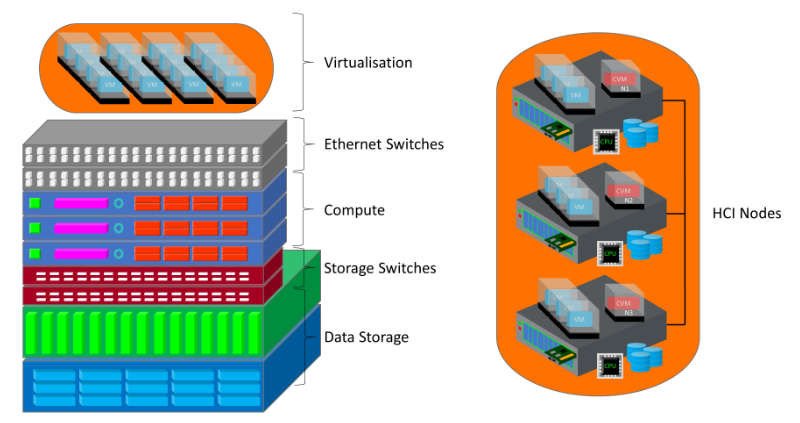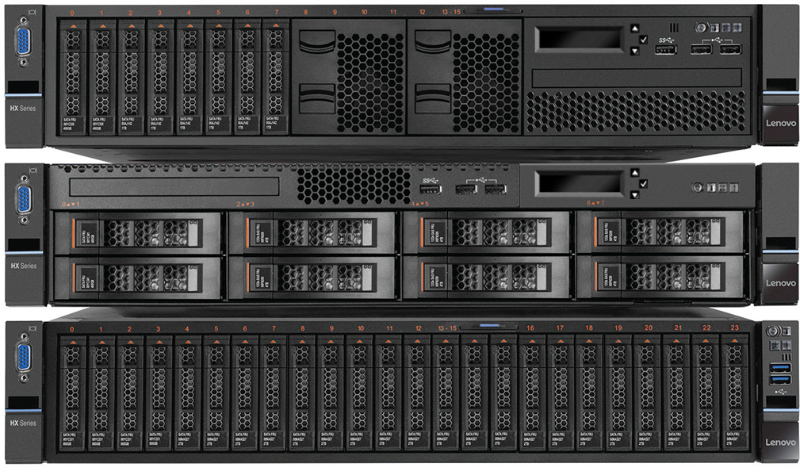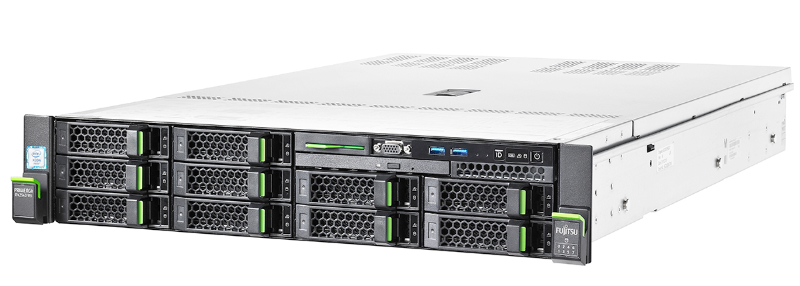Unlock IT Excellence with Hyperconverged Infrastructure Solutions
Helping to Modernise the Data Centre
Are you tired of dealing with complex and fragmented data management solutions? Do you need a more streamlined and efficient way to manage your organisation's IT infrastructure? If so, hyperconverged infrastructure is the solution you’ve been searching for!
This cutting-edge technology simplifies operations and transforms data management, offering businesses an all-in-one system that maximises productivity. Additionally, by combining computing, storage, and networking into a single, easy-to-manage platform, hyperconverged infrastructure eliminates the headaches caused by traditional IT setups.
With its ability to reduce complexity and boost efficiency, this revolutionary approach is quickly becoming a game-changer for organisations of all sizes. Why wait? Explore hyperconverged infrastructure today and take the first step toward a smarter, more efficient IT strategy.
What is hyperconverged infrastructure?
Hyperconverged infrastructure, often referred to as HCI, revolutionises IT infrastructure management. It integrates computing power, storage, and networking resources into a single system. In other words, it consolidates all components needed for data management into one cohesive unit.
By combining these traditionally separate elements, organisations simplify operations and achieve greater efficiency. Gone are the days of dealing with multiple pieces of hardware and complex configurations. With HCI, everything integrates seamlessly.<br>One of the key benefits of hyperconverged infrastructure is its scalability. Organisations can expand their resources easily by adding more nodes to the existing cluster. This eliminates the need for costly and time-consuming hardware upgrades or migrations.
Another advantage of HCI is improved performance. With all components working together in a single system, latency reduces, and speed increases. This translates to faster response times and an enhanced user experience.
Additionally, HCI offers advanced data protection features, including built-in backup and disaster recovery. These ensure critical business information stays safeguarded against unexpected events or failures.
HCI brings simplicity, scalability, performance improvements, and robust data protection to organisations. With its integrated approach, HCI is transforming data management solutions.
Below is a diagram of the two different types of how hyperconverged infrastructure can be purchased.

How do hyperconverged infrastructure work?
At its core, hyperconverged infrastructure brings together compute, storage, and networking components into a single integrated system. This consolidation eliminates the need for separate hardware silos and simplifies management tasks.
Within a hyperconverged environment, software-defined storage plays a crucial role. It virtualises all available storage resources from each node in the cluster and presents them as a unified storage pool. This allows organisations to efficiently allocate and manage their data across the entire infrastructure.
To ensure high availability and resilience, hyperconverged systems leverage distributed architectures. Data is replicated across multiple nodes within the cluster, providing built-in redundancy in case of hardware failures or system downtime.
The underlying hypervisor layer enables seamless virtualisation capabilities in hyperconverged infrastructures. By abstracting compute resources from physical hardware, it allows for flexible deployment and scalability of virtual machines (VMs) on-demand.
With intelligent management software, administrators can easily monitor and control the entire infrastructure from a centralised dashboard. They can perform tasks such as resource allocation, workload balancing, data backups, and disaster recovery operations with ease.
Hyperconverged infrastructure works by integrating compute, storage, networking components into one cohesive unit while leveraging software-defined technologies to provide flexibility and efficiency for managing resources effectively in modern data centres.

Components of HCI
Compute — The compute component of hyperconverged infrastructure includes the processing power required to run virtual machines (VMs) and applications. These resources are pooled and managed through a hypervisor, which enables efficient utilisation and scaling based on demand.
Data Storage — hyperconverged infrastructure replaces traditional storage arrays with a distributed storage system that combines the storage capacity of all nodes within the cluster. This shared storage pool eliminates the need for complex SAN or NAS configurations. Additionally, data redundancy is ensured through techniques like data replication and erasure coding.
Networking — Networking in hyperconverged infrastructure is software-defined, allowing administrators to manage and configure resources through a central interface. This approach simplifies network management, improves workload mobility, and supports efficient load balancing.
Software — The software orchestrates the configuration and management of hardware resources, enabling centralised control through a software-defined interface. This design eliminates the need for specialised hardware and promotes flexibility in deploying and scaling infrastructure.
Hyperconverged infrastructure meaning
Hyperconverged infrastructure (HCI) is a revolutionary approach to data management that combines compute, storage, and networking into a single integrated system. Traditionally, each of these components operated as separate entities requiring their own specialised hardware and management systems. HCI simplifies this by consolidating everything into one cohesive unit.
At its core, hyperconverged infrastructure streamlines data centre operations and improves overall efficiency. By virtualising resources and leveraging software-defined technologies, organisations can achieve greater agility and scalability while also reducing costs.
One of the key features of hyperconverged infrastructure is its ability to scale horizontally rather than vertically. Instead of adding more resources to a single server or appliance, organisations can easily expand capacity by adding additional nodes to the existing cluster. This flexibility enables businesses to start small with minimal investment and grow as needed.
Another critical aspect of hyperconverged infrastructure is its emphasis on centralised management. With all components tightly integrated within the system, IT administrators benefit from a unified interface to monitor and control various tasks, including storage provisioning, virtual machine deployment, and network configurations.
hyperconverged infrastructure delivers numerous benefits such as improved performance, simplified operations, reduced complexity, on-demand scalability, and lower total cost of ownership. As organisations continue to pursue digital transformation strategies, hyperconverged infrastructure has emerged as a proven solution for managing modern workloads in dynamic environments.

The benefits of hyperconverged infrastructure
Hyperconverged infrastructure (HCI) provides numerous benefits that transform how organisations manage their data. Firstly, one of the most significant advantages is its simplicity. HCI integrates all components—storage, compute, networking, and virtualisation—into a single system. As a result, it eliminates the need for separate hardware and complex configurations, streamlining operations.
In addition, scalability is another key benefit of hyperconverged infrastructure. Organisations can easily scale up or down by adding or removing nodes as required. This means businesses can adapt to changing demands without overinvesting in unnecessary resources.
Moreover, cost savings are a major advantage of hyperconverged infrastructure. By consolidating multiple components into one system, organisations can lower hardware costs, reduce power consumption, and minimise maintenance expenses. Furthermore, the simplified management and automation capabilities enable IT teams to save time and focus on strategic initiatives.
Simplicity and Ease of Management
HCI significantly reduces the complexity of managing data centre infrastructure. By integrating components into a single platform, it streamlines deployment, provisioning, and maintenance tasks. Consequently, management processes become faster and more straightforward.
Reduced Data Centre Footprint
Additionally, by consolidating resources and removing the need for separate storage arrays, HCI optimises physical data centre space. This not only reduces power and cooling requirements but also minimises the use of floor space, contributing to overall efficiency.
Furthermore, HCI enhances data protection and disaster recovery capabilities. With features such as snapshots and replication across nodes, organisations can ensure business continuity during unforeseen events. These capabilities strengthen data resilience and safeguard critical information.
Vendor Integration
Another advantage is that many HCI solutions are tightly integrated and pre-validated by vendors. This ensures compatibility, minimises the risk of configuration errors, and simplifies deployment.
Finally, HCI improves performance by enabling efficient data processing and reducing latency. The integration of storage with compute resources removes bottlenecks and allows faster data access, enhancing overall system performance.
Hyperconverged Infrastructure Uses
Data Centre Consolidation
HCI significantly enhances centralised management by providing a single console for all components—compute, storage, and networking. As a result, this unified approach simplifies provisioning, monitoring, and troubleshooting tasks. Furthermore, HCI allows resources to scale horizontally by adding nodes to the cluster, whether for storage or computing power. This modular design not only makes it easy to expand resources based on demand but also enables organisations to handle growing workloads effectively.
Virtual Desktop Infrastructure (VDI)
HCI is ideal for VDI deployments, where virtual desktops need seamless integration of compute and storage resources. Moreover, its scalability and agility align perfectly with the dynamic demands of VDI environments, ensuring smooth performance and adaptability.
Private / Hybrid Cloud Deployments
HCI serves as a strong foundation for private cloud infrastructure. In particular, its flexibility empowers organisations to create and manage private or hybrid clouds efficiently. Additionally, it provides resources on-demand, supporting different business units or projects with ease.
Remote and Edge Environments
Organisations with remote offices or edge computing needs benefit from HCI’s compact form factor and simplified management. This capability not only offers centralised control but also meets the requirements of distributed infrastructure, ensuring consistency across locations.
Disaster Recovery
HCI delivers robust disaster recovery solutions with built-in replication and backup capabilities. For example, organisations can replicate data to off-site locations and restore operations quickly in the event of a catastrophe. As a result, downtime and data loss are minimised, ensuring business continuity.

Conclusion
As we reach the end of this blog post, it's clear that hyperconverged infrastructure is a game-changer in the world of data management solutions. Its ability to combine storage, compute, and networking into a single platform offers numerous benefits for businesses of all sizes.
By eliminating the need for separate hardware components and streamlining operations, HCI reduces costs and complexity. It allows organisations to easily scale their resources as needed, improving agility and flexibility. With simplified management and automation capabilities, IT teams can focus on more strategic initiatives rather than spending time on maintenance tasks.
In addition to these advantages, HCI also enhances data protection and disaster recovery capabilities. By integrating backup and replication features into the platform itself, businesses can ensure their critical data is always available even in the face of unexpected events or cyber threats.
HCI brings together simplicity, scalability, efficiency, and resilience in one comprehensive solution. As technology continues to evolve at a rapid pace, it's clear that this innovative approach to data management will play an increasingly important role in modern enterprises.
So whether you're a small business looking to optimise your IT infrastructure or a large organisation seeking improved performance and cost savings - consider exploring hyperconverged infrastructure as your go-to solution for managing your valuable data assets!
If you would like to know more about the types of hyperconverged infrastructure solutions from DELL Technologies, HPE, Lenovo or Fujitsu we provide, please contact us using the details below.
